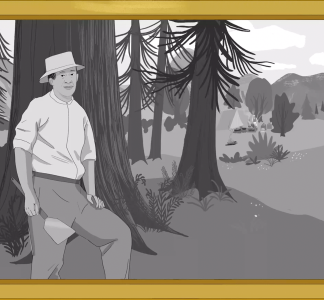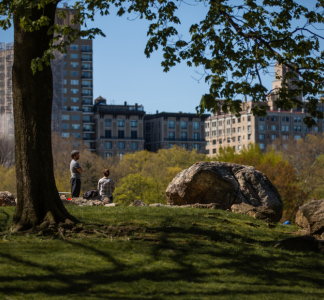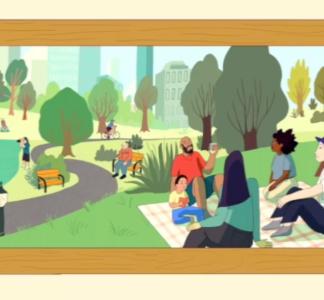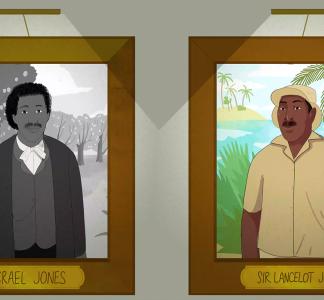Nüümü Poyo: Healing and reclamation on the John Muir Trail with Indigenous Women Hike
Learn how Jolie Varela led a group of Indigenous women on a journey to hike the Nüümü Poyo (also known as the John Muir Trail), in an act of cultural reclamation.
Our newest animation tells the story of the origins of Indigenous Women Hike with Jolie Varela!
Jolie, a citizen of the Tule River Yokuts and Nüümü (Paiute) Tribes found nature became a means of personal healing and a way to bring attention to environmental injustices faced by their own community. Learn how they led a group of Indigenous women on a journey to hike the Nüümü Poyo (the “People’s Trail”) in Pamidu Toiyabe, (also known as the John Muir Trail in California's Sierra Nevada), in an act of cultural reclamation.*
Throughout their journey, the women faced challenges and confronted reminders of the injustices done to Native people, such as derogatory trail signs and the erasure of Indigenous place names. Despite these challenges, they completed their journey, summiting Tumanguya (Mt. Whitney) and continued to work to connect people with the land.
*Author's Note: It is important to recognize and acknowledge that the Pamidu Toiyabe (Sierra Nevada) encompasses ancestral trade routes and homelands for numerous Indigenous Tribes, including the Yokut, Miwuk, Kudzidika, Mono, and many others. Each of these Tribes has its unique names in their respective languages for the region and specific areas within this landscape. It's crucial for all of us to understand and respect the diverse Indigenous heritage of this region, and to acknowledge that we are utilizing the Nüümü names, which reflect just one perspective of the rich culture of the land.
The Public Lands Curriculum
Eric Bennett
How Tie Sing helped create the National Park Service
Before Central Park came Seneca Village, Black community hidden in the heart of Manhattan
Eammon Ashton-Atkinson, Flickr
How a Black community in NYC's Central Park disappeared
How Sir Lancelot Jones helped create a national park
Lily Padula






